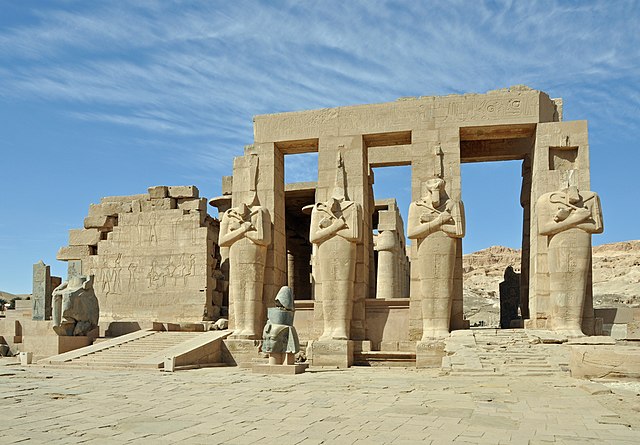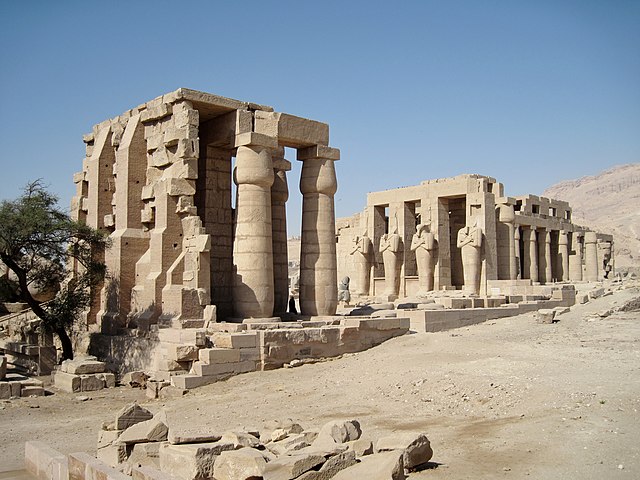The Younger Memnon is an Ancient Egyptian statue, one of two colossal granite statues from the Ramesseum mortuary temple in Thebes, Upper Egypt. It depicts the Nineteenth Dynasty Pharaoh Ramesses II wearing the Nemes head-dress with a cobra diadem on top. The damaged statue has since been separated from its upper torso and head. These sections can now be found in the British Museum. The remainder of the statue remains in Egypt. It is one of a pair that originally flanked the Ramesseum's doorway. The head of the other statue is still found at the temple.
The Younger Memnon (Ramesses II)
The moving of the Younger Memnon by Italian explorer Giovanni Belzoni
The pair to The Younger Memnon, still at the Ramesseum
The installation of the Younger Memnon at the BM sculpture gallery
The Ramesseum is the memorial temple of Pharaoh Ramesses II. It is located in the Theban Necropolis in Upper Egypt, on the west of the River Nile, across from the modern city of Luxor. The name – or at least its French form Rhamesséion – was coined by Jean-François Champollion, who visited the ruins of the site in 1829 and first identified the hieroglyphs making up Ramesses's names and titles on the walls. It was originally called the House of millions of years of Usermaatra-setepenra that unites with Thebes-the-city in the domain of Amon. Usermaatra-setepenra was the prenomen of Ramesses II.
Aerial view of Thebes' Ramesseum, showing pylons and secondary buildings
The "other" granite head displayed in front of Osiris statues
Ruined structures
A true arch at the Ramesseum granaries








